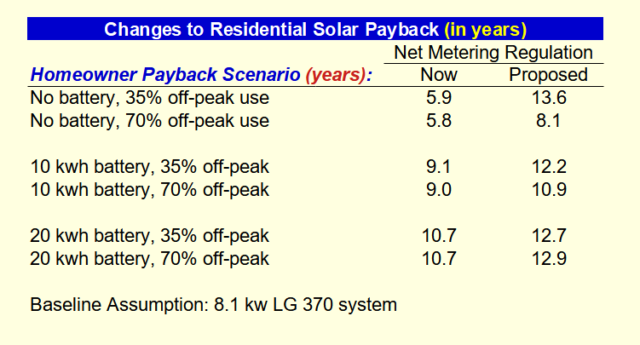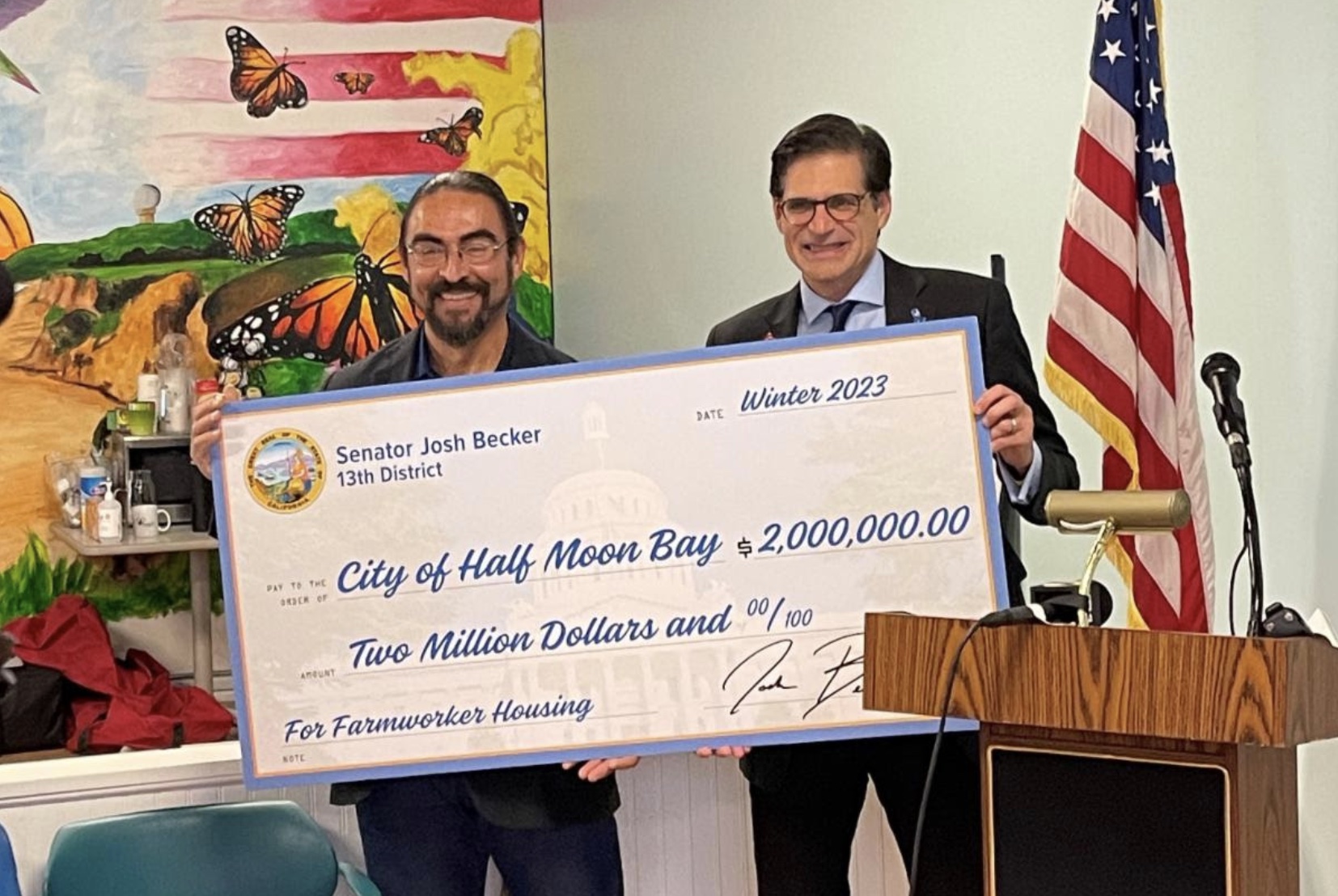|
Getting your Trinity Audio player ready...
|
OWN VOICE. ~ InPerspective by Barry Cinnamon with Gregg Dieguez —
If you don’t speak up now, the Calif. Public Utilities Commission is going to raise your solar electrical rates, move our energy infrastructure expensively in the wrong direction, and miss the opportunity to fix California’s energy infrastructure for us all. Here’s what’s happening on Jan. 27th, and what you can do about it.
Images: Click to enlarge for improved readability in a new window.
What’s the threat to you?
The battle between rich monopoly utilities and the “behind the meter” (residential rooftop) solar industry is coming to a head on Jan. 27th in California. Here are 7 reasons to oppose this Profit Grab:
1. Higher Costs for Solar Users: The three biggest utilities are lobbying the Public Utilities Commission to add a $40-80 monthly solar penalty fee to solar customer energy bills and reduce by 80% the net metering credit solar consumers receive for selling the excess energy they produce. And they plan to reduce the grandfathering of EXISTING solar customers from 20 years to 15 years. (Grandfathering refers to the time period during which customers can stay on the existing net metering plan without changes to their reimbursement rate or fixed charges.) Whether you live in California or not, If the utilities get their way, there will be a devastating impact on the solar and storage industry throughout the U.S. On an individual basis, they plan on changing the rules of the game you signed up for when you made your $10-20,000 home investment.

2. Reduced incentive to Go Green: New solar and battery customers – both residential and commercial – would see their paybacks go from about 6 years to 14 years. Does it make economic sense to slam the brakes on rooftop solar and storage, and make it impossible for California to achieve the goal of carbon neutrality by 2045? Well, yes, if you’re PG&E and you want others to pay for your mistakes. The table at right >> shows the changes in payback period for a solar homeowner under various assumptions.
Those who generate power on their rooftops are saving all of us the costs of expanding the electrical grid, since the power rooftop solar generates doesn’t need to be transmitted long distances by power lines – it is used locally. Further, rooftop solar reduces the amount of land that would otherwise be dedicated to large solar farms. Rooftop solar also increases the resiliency of the grid since there is local generation and battery power available to feed into the grid locally – especially when there are power shortages on hot days.
3. More Profits for PG&E: PG&E recently announced plans to bury 10,000 miles of overhead transmission lines over a ten-year period. Although new transmission lines should be installed underground, burying existing power lines is basically a coverup for PG&E’s failure to properly operate and maintain these transmission lines in the first place — a greedy utility profit grab, pure and simple. PG&E estimates that it will cost $4 million per mile to bury these transmission lines, or $40 Billion. All of that money, plus interest, will come from current ratepayers. Moreover, PG&E gets a guaranteed 12% rate of return for 50 years on their transmission investments, an extra $4.8 Billion per year in pure profit ($48 Billion in additional profits over ten years or $240 Billion over 50 years). Understand why they’re pushing to do that, instead of fixing what they have?
What’s the alternative? Consider that the $88 Billion investment and guaranteed profit from the “undergrounding” over just the first 10 years would pay for a solar-powered battery backup system on every home and business in PG&E territory! What would you prefer, giving PG&E an extra $4.8 Billion of annual profits plus charging ratepayers $40 Billion for new transmission lines, OR solar and a battery on every rooftop?
4. This Rate Proposal Will Cost Jobs: According to the 2020 IREC National Solar Jobs Census, there are 68,677 direct solar workers in California. When similar net metering reductions and monthly fixed charges were implemented in other states, demand for solar installations plummeted and virtually every solar company was faced with the choice of widespread layoffs or bankruptcy.
California is proud of its clean energy economy, and is the biggest solar jobs employer in the U.S. Do you want the widespread job destruction and losses at solar installers, manufacturers and vendors – as happened in Nevada when net metering was obliterated — to happen in California?
5. This Rate Proposal Rewards Incompetence and Corruption: PG&E, California’s biggest utility, filed for bankruptcy twice: the first time in 2001 as a result of California’s energy crisis, then again in 2019 as a result of $30 Billion in liabilities for fires started by its poorly maintained equipment. PG&E was criminally convicted twice (so far): for causing the deadly San Bruno gas explosion in 2010 and causing the Camp Fire in 2018. It was convicted of 85 felonies for its role in the 2018 Camp Fire, but CPUC waived $200 million worth of fines as part of a plan created by the Newsom Administration and CPUC to save PG&E from bankruptcy. PG&E recently admitted that their equipment caused the Dixie Fire in 2021. To reward this bad behavior, PG&E announced a plan to pay up to $454 million in bonuses for employees and senior executives, while at the same time telling a federal judge that they cannot afford to maintain a workforce of 5,500 tree trimmers this year.
Should we support a twice bankrupt and twice convicted utility that just raised electric rates by 11% and that lines the pockets of utility executives to the tune of almost half a Billion dollars annually while literally burning down forests and entire communities? Or would it make more sense to invest in clean local power and safety improvements?
6. This Rate Proposal is a step backward for Equity. The CPUC falsely claims they are helping more low-income households by exempting them from the solar penalty fee. In reality, the CPUC’s deal would make solar more expensive for low-income households. For example, low-income households going solar with PG&E would pay $24 to $50 per month more than under the status quo. That’s because slashing the net metering credit by 80% destroys the bill savings that make solar a good investment.
7. This Rate Proposal Rewards PG&E at the expense of everyone else: Let’s compare electricity costs delivered to homes and businesses. PG&E pays less than $0.03/kwh for their own solar-generated electricity, but they charge the average customer $0.30/kwh. Homes and business that install their own solar and storage systems can do so for $0.05 to $0.10/kwh. Utilities benefit by overcharging customers to cover their outrageous overhead costs. On the other hand, everyone benefits when homes and businesses invest in rooftop solar and storage. Over one million solar systems are located at schools, farms, businesses, homes, and low-income apartment buildings throughout California. Thanks to policies like net metering that make solar affordable, 42% of the rooftop solar market is in working-class and middle-class neighborhoods. A new grid modeling report from Vibrant Clean Energy shows growing local solar and storage would save California ratepayers $120 Billion over the next 30 years, the equivalent of $295 per year for the average California ratepayer.
Why are we here?
Well, Gov. Newsom has failed to live up to his campaign promise that he’d “own this problem”, meaning PG&E. The Pandemic had something to do with that, but an effective government has to be able to walk and chew gum at the same time, especially over 2 years later. Secondly, your cowardly legislature (hello, Kevin Mullin) decided to punt on voting on this issue – because they would have been on the record for their decision. Instead they punted it to the CPUC as “more appropriate” to make the decision. Meaning, legislators wouldn’t have to take the heat for their decisions.
What should California be doing instead?
Convene a Commission independent of the CPUC and electric utilities to re-imagine California’s Energy Future . This could result in:
1. The breakup or buy-out of PG&E and replacement, with several options available.
2. Investment in more resilient and cheaper rooftop solar and home batteries. The central power generation model cannot compete with the cost and resilience of solar and battery technology. This is not a matter of IF, but When.
3. Removing the profit incentive perverting PG&E investment decisions against the public interest.
4. Regulatory oversight that is more ethical and effective than the CPUC and less complicit in PG&E errors.
What can you do?
It’s time to get MAD and Take Action! My vision of the future is for every building to generate its own energy, with backup power to cover the inevitable grid outages, which you readers already experience too often. I want solar and storage to be affordable for all homeowners, and I want to see a rapid transition to microgrids, two-way power flow, and fully electrified buildings (why are these good & important?). If you agree…
1. Write Gov. Gavin Newsom. Use this link: https://govapps.gov.ca.gov/gov40mail/
2. Sign the petition opposing this rate increase: Use this link: Tell Governor Newsom: stand up to the utility attack on solar
3. Pass this article, and your concern, on to every Calif. Resident you know.
4. Ask your City and County government to oppose this rate increase, and ask for the measures described above.
More From Gregg Dieguez ~ “InPerspective”

<< Barry started his career in solar energy in the late 1970’s at MIT researching new flat plate and concentrating collector designs. He holds a BS degree from MIT in Mechanical Engineering, and an MBA from Wharton. He has worked for over 30 years in the solar and energy industries holding positions at Akeena Solar, Westinghouse, and Cinnamon Energy Systems, which he obviously founded. His pioneering work on reducing costs of rooftop solar power systems led to over 30 issued and applied for patents, including a number of products that transformed the solar industry, including Andalay, the first solar panel with integrated racking, grounding and wiring, and Instant Connect, the first fully “plug and play” AC solar panel. PG&E is a frequent foil of his….
Gregg >> is a native San Franciscan, longtime San Mateo County resident, and semi-retired entrepreneur who causes occasional controversy on the Coastside. He is a member of the MCC, but his opinions here are his own, and not those of the Council. He lives in Montara. He loves a productive dialog in search of shared understanding.







Gregg – Thanks for putting all the info about the utilities and solar in one place, very helpful. What makes this proposal incredibly evil is that the utilities are saying that the primary reason they want to make changes is because the current NEM 2.0 disadvantages low income people. See page 4 page “NEM needs an equitable transition from 2.0 to 3.0” in this link: https://www.cpuc.ca.gov/-/media/cpuc-website/divisions/energy-division/documents/net-energy-metering-nem/nemrevisit/protect-our-communities-foundation-slides.pdf
Gregg, thank you for posting this!
You would think that PG&E & other utilities would be more grateful to the people who generate the power they sell, and the people who save them so many kWh in transmission line losses!